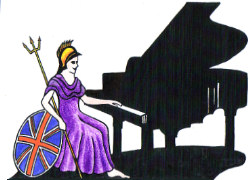Teachers, Accompanists and Piano Entertainers in the UK

UK Piano Page

Victoria Works
Benjamin Street
Wakefield, West Yorkshire WF29AR
England
We deal in a wide variety of Pianos traditional &
Madbrook Farm
Warminster Road
Westbury, Wiltshire BA133RB
England
OVER 100 PIANOS IN STOCK ! Sales at our stores in
194 Penn Road
High Wycombe, Buckinghamshire HP15 7 NU
England
Sell both new & used pianos, superb choice of 75
40 Willsgrove
Cahercalla
Ennis, County Clare
Republic of Ireland
Pianos for Sale
Tree Tops
3 Teviot Bank Gardens
Hawick, Renfrewshire TD9 8PB
Scotland
We can retail most of the well known brands of
Music Festival for performers and guests Our 10th
18-06-2022 12:30PM
The Morecambe Bay Piano Group was set up to extend
11-12-2021 01:00PM
The Morecambe Bay Piano Group was set up to extend
08-01-2022 01:00PM
The Morecambe Bay Piano Group was set up to extend
12-02-2022 01:00PM